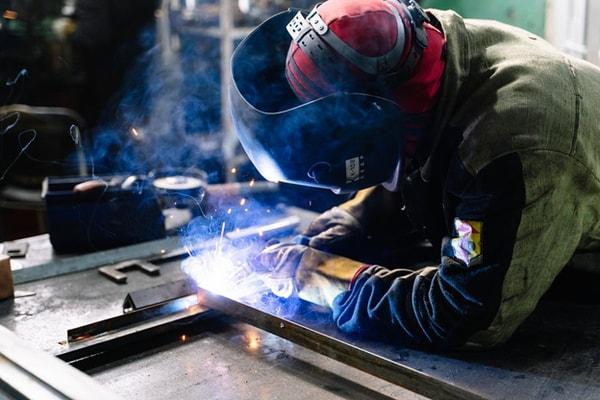Why a Welding WPS is Crucial: Enhancing Consistency and Conformity
Why a Welding WPS is Crucial: Enhancing Consistency and Conformity
Blog Article
Mastering Welding WPS Criteria: Finest Practices and Techniques for High Quality Welds
In the realm of welding, mastering Welding Treatment Spec (WPS) criteria is an important part that directly affects the high quality and integrity of welds. Following these requirements guarantees uniformity and dependability in welding results. Nevertheless, achieving quality in welds surpasses just recognizing the criteria; it involves applying finest techniques and methods that raise the craft to a level of accuracy and ability that sets apart the standard from the phenomenal. As we browse via the ins and outs of welding WPS standards, discovering vital understandings and strategies for attaining top-tier welds will be vital for welders seeking to master their craft and generate welds that stand the test of time.
Understanding Welding WPS Requirements

Recognizing WPS criteria is important for designers, assessors, and welders included in welding operations. By adhering to WPS guidelines, welders can generate welds that satisfy the required mechanical residential or commercial properties and architectural stability. Assessors rely upon WPS documentation to validate that welding procedures are being adhered to correctly which the resulting welds are of high top quality. Designers use WPS criteria to develop welding treatments that ensure the resilience and integrity of welded frameworks.


Necessary Devices for Top Quality Welds
Understanding welding WPS criteria is vital for welders to properly make use of the necessary devices required for producing high quality welds. Among one of the most vital devices for high quality welds is a welding device. The sort of welding device needed relies on the welding procedure being utilized, such as MIG, TIG, or stick welding. Welding safety helmets are additionally crucial to secure the welder's eyes and face from stimulates, heat, and UV radiation. In addition, welding handwear covers made from resilient and heat-resistant products secure the hands from burns and injuries. Magnets and clamps aid hold the workpieces together firmly during the welding procedure, making sure exact and accurate welds. Cord brushes and cracking hammers are important for cleaning the weld joint prior to and after welding to remove any kind of impurities that can influence the high quality of the weld. Last but not least, a measuring tape and angle grinder serve tools for ensuring correct alignment and more preparing the work surfaces for welding.
Secret Strategies for Welding Success
To achieve welding success, one need to master the essential strategies important for creating high-grade welds. One essential method is keeping the correct arc length. Keeping the electrode at the optimal range from the work surface is vital for producing solid, consistent welds. In addition, regulating the travel speed is vital. Relocating also swiftly can cause not enough penetration, while moving too slowly can result in too much warmth input and possible defects. Proper control of the electrode angle is another important method. The angle at which the electrode is held can impact the grain form and infiltration of the weld. In addition, guaranteeing constant gun angle and direction of traveling is vital for harmony in the weld grain. Lastly, maintaining a steady hand and a stable welding placement throughout the procedure is crucial to attaining accuracy and uniformity in the welds. By grasping these crucial methods, welders can raise the high quality of their job and attain welding success.
Ensuring Conformity With WPS Specifications

In addition, maintaining in-depth records of welding parameters, helpful site equipment calibration, and examination outcomes is vital for demonstrating compliance with WPS criteria. By diligently sticking to WPS requirements, welders can ensure that their job satisfies the required top quality levels and adds to the general success of the welding project.
Troubleshooting Common Welding Issues
When encountered with typical welding issues, identifying the origin is important for effective troubleshooting. One widespread issue is the existence of porosity in welds, usually brought on by contaminants such as oil, corrosion, or wetness. To address this, ensuring appropriate cleaning of the base metal prior to welding and utilizing the proper securing gas can considerably lower porosity. One more concern often come across is lack of fusion, where the weld falls short to effectively bond with the base product. This can stem from inadequate warmth input or incorrect welding strategy. Adjusting specifications such as voltage, cord feed speed, or travel rate can help enhance blend. Additionally, distortion, splitting, and spatter are common welding obstacles that can be reduced with correct joint preparation, constant warmth control, and choosing the proper welding consumables. By thoroughly comprehending these typical welding concerns and their origin, welders can efficiently fix troubles and accomplish high-grade welds.
Conclusion
Finally, understanding welding WPS criteria calls for a thorough understanding of the guidelines, utilizing essential tools, and executing essential methods for successful welds. Guaranteeing compliance with WPS standards is vital for generating top quality welds and staying clear of usual welding problems. By complying with best practices and techniques, welders can attain constant and trustworthy results in their welding projects.
In the world of welding, understanding Welding Procedure Specification (WPS) criteria is an essential part that straight influences the quality and honesty of welds.When delving into the world click here to find out more of welding methods, an important aspect to comprehend is the significance and details of Welding Procedure Specification (WPS) criteria. WPS requirements supply a thorough guideline for welding operations, making certain consistency, quality, and safety in the welding procedure. The type of welding equipment needed depends on the welding process being used, such as MIG, TIG, or stick welding.Attaining welding success with the proficiency of essential techniques requires a thorough understanding and adherence to Welding Procedure Requirements (WPS) requirements.
Report this page